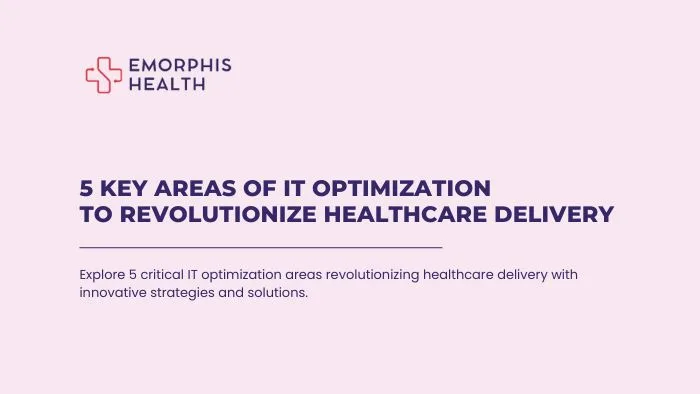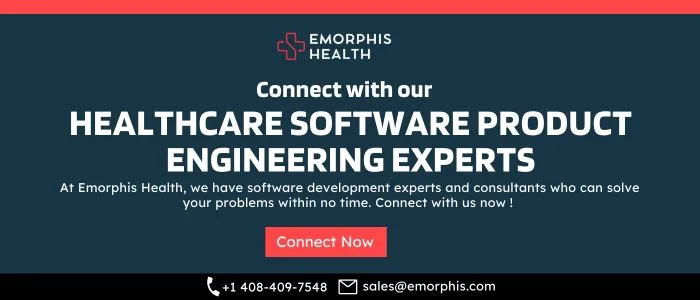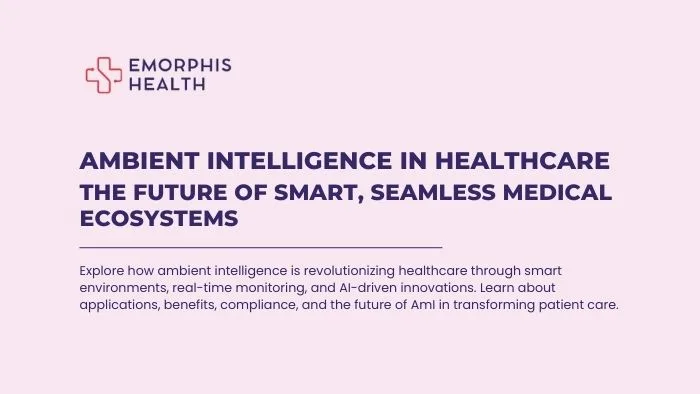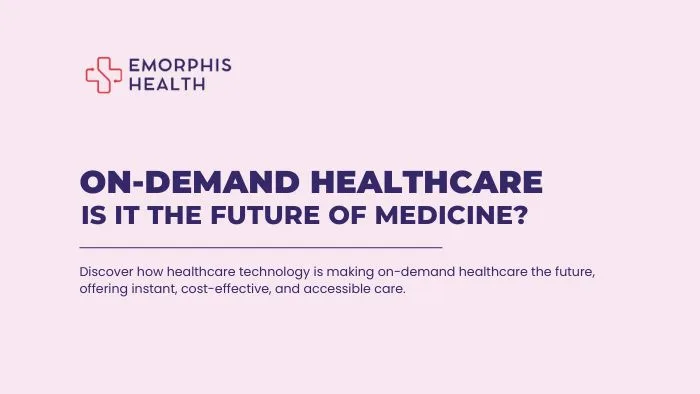In the modern healthcare landscape, the efficiency and effectiveness of IT systems directly influence patient outcomes, operational success, and cost management. To keep pace with the growing demands of the industry, optimizing healthcare IT systems has become a necessity rather than a choice. Let’s get into the details of IT optimization strategies first, followed by the technology solutions that are helping revolutionize healthcare delivery.
Here’s how the following IT Optimization strategies can bring tangible benefits to healthcare organizations.
1. Delivering Better Patient Outcomes
See Contents
- 1 1. Delivering Better Patient Outcomes
- 2 2. Streamlining Operational Efficiency
- 3 3. Reducing Costs While Enhancing Services
- 4 4. Strengthening Data Security and Compliance
- 5 5. Driving Patient Engagement and Satisfaction
- 6 Technology Trends Transforming IT Optimization in Healthcare
- 7 The Time for Action Is Now
Optimized IT systems serve as the backbone for proactive and personalized patient care. With real-time data integration, healthcare providers can monitor patients continuously and intervene at the earliest signs of complications. Predictive analytics, powered by well-structured IT frameworks, offer insights that help tailor treatments to individual needs, resulting in improved recovery rates and overall patient satisfaction.
2. Streamlining Operational Efficiency
Inefficient systems and outdated processes can burden healthcare facilities, leading to delays, errors, and burnout. IT optimization eliminates such roadblocks by automating routine tasks, enhancing interdepartmental communication, and providing instant access to critical information. Centralized systems minimize redundancies and ensure that resources—be it personnel, equipment, or facilities—are used efficiently. The ripple effect of connected healthcare systems is a more seamless patient experience and an increase in organizational productivity.
3. Reducing Costs While Enhancing Services
Optimized IT systems ensure resources—whether human, financial, or technological—are allocated efficiently. For example, automated scheduling systems can help maximize the utilization of equipment and facilities, preventing downtime and unnecessary expenses. Additionally, streamlined billing processes, with healthcare revenue cycle management software reduce errors and improve revenue cycles, enabling healthcare organizations to reinvest savings into expanding services or adopting advanced technologies.
4. Strengthening Data Security and Compliance
The importance of securing sensitive patient information cannot be overstated. Modern IT systems employ advanced healthcare cybersecurity measures to protect against breaches while ensuring compliance with healthcare regulations. Automated compliance tracking and reporting reduce the risk of penalties and maintain trust between patients and providers. By prioritizing security within IT optimization, healthcare organizations safeguard their reputation and enhance patient confidence.
5. Driving Patient Engagement and Satisfaction
Digital tools like patient portals, telehealth services, and mobile health apps are key to fostering better patient engagement. These tools allow individuals to access their health information, schedule appointments, and consult with providers from the comfort of their homes. This not only increases patient satisfaction but also promotes better health management, as individuals feel more empowered to take charge of their care.
Now let’s check the details of which technology is trending for such IT optimization.
Technology Trends Transforming IT Optimization in Healthcare
Healthcare is undergoing a technological renaissance, with IT optimization playing a pivotal role in streamlining operations and delivering superior patient care. Below is a fresh perspective on the most impactful technology trends shaping the future of healthcare IT.
a. AIML – Artificial Intelligence and Machine Learning Technology
AI and ML are transforming how healthcare systems process data and deliver insights. These technologies enable faster diagnoses, predictive analytics, and automation of time-intensive tasks, making IT infrastructure more efficient.
- Use Cases: AI aids in early disease detection, personalized medicine, and automating repetitive tasks like medical coding.
- Key Benefits: Faster decision-making, error reduction, and improved patient outcomes.
b. The Cloud Revolution
Cloud computing has redefined healthcare IT by offering secure, scalable solutions for data storage and management. It enables healthcare providers to centralize patient records and access them anytime, anywhere.
- Advantage: Facilitates collaboration between departments and supports telemedicine by hosting virtual consultation platforms.
- Emerging Trend: The rise of hybrid cloud models, which combine public and private cloud capabilities to balance flexibility with security.
c. Seamless Interoperability
Modern healthcare systems rely on seamless data exchange across platforms like Electronic Health Records (EHRs) and Health Information Exchanges (HIEs). Interoperability ensures that every healthcare provider has a comprehensive view of patient data.
- Tools in Play: Standards like HL7 FHIR (Fast Healthcare Interoperability Resources) are paving the way for better integration.
- Impact: Enhanced coordination of care, fewer redundancies, and reduced healthcare costs.
d. Internet of Medical Things (IoMT)
Connected devices in the healthcare ecosystem, known as IoMT, are enhancing IT systems by automating real-time data collection. This network of devices provides actionable insights that support clinical decisions.
- Examples: Smart insulin pens, wearable ECG monitors, and remote patient monitoring tools.
- IT Benefits: Lower administrative workload and real-time data processing for quicker interventions.
e. Robotic Process Automation (RPA)
RPA is a game-changer for healthcare IT, automating mundane yet essential tasks such as appointment scheduling, claims processing, and inventory management.
- Why It Matters: RPA reduces human error, speeds up operations, and improves compliance.
- Future Potential: Incorporating AI into RPA to handle complex workflows, making systems even smarter.
f. Bolstered Cybersecurity Measures
The digital transformation of healthcare brings an increased risk of cyberattacks, making cybersecurity a top priority. Advanced tools are being deployed to safeguard patient data while maintaining compliance with regulatory standards like HIPAA and GDPR.
- Trends to Watch: AI-powered threat detection, multi-factor authentication (MFA), and blockchain for secure data exchanges.
- Result: Strengthened data protection and greater trust from patients and stakeholders.
g. Advanced Data Analytics
Big data and advanced analytics are helping healthcare providers optimize IT systems by turning raw data into meaningful insights. This allows healthcare organizations to predict trends, monitor patient populations, and improve decision-making.
- Key Uses: Population health management, operational forecasting, and predictive maintenance for medical equipment.
- Edge: Advanced analytics helps identify inefficiencies in IT operations, leading to better resource utilization.
h. Virtual Healthcare Expansion
Telemedicine is no longer a luxury; it’s a necessity. Healthcare IT is evolving to support robust virtual care platforms, offering remote consultations, diagnostics, and follow-ups.
- Innovations: 5G-enabled virtual consultations and AI-driven chatbots for initial triage.
- Healthcare Optimization: Reduces the strain on physical facilities while making healthcare accessible to underserved areas.
i. Blockchain for Transparent Data Management
Blockchain technology is emerging as a revolutionary tool for healthcare data management. Its decentralized and tamper-proof nature makes it ideal for managing sensitive patient records and clinical trial data.
- Potential Applications: Ensuring data integrity, streamlining drug supply chains, and enabling seamless patient consent management.
- Challenges: While promising, scalability and adoption barriers remain.
j. DevOps and Agile in Healthcare IT
Adopting DevOps and Agile practices ensures rapid and efficient IT deployments. These frameworks enable healthcare organizations to continuously refine their systems to meet evolving demands.
- Technological Boost: Tools like Kubernetes and Docker simplify application scaling and updates.
- End Goal: Improved system reliability and reduced downtime, which are critical for healthcare operations.
Further, find the details on Managed IT services for healthcare.
The Time for Action Is Now
As healthcare systems become more interconnected, the need for optimized IT systems grows. The rapid evolution of technology has provided tools and platforms capable of addressing longstanding inefficiencies in healthcare. By focusing on IT optimization, healthcare organizations can position themselves to deliver higher-quality care while staying resilient in the face of industry challenges.
Investing in IT optimization is not merely about keeping up with trends; it is about building a sustainable, patient-centered, and future-ready healthcare ecosystem. When systems are designed to function seamlessly, the ripple effects—better outcomes, operational efficiency, and financial sustainability—become impossible to ignore.
The question is no longer whether IT optimization is necessary but how quickly it can be implemented to meet the ever-growing needs of modern healthcare.






